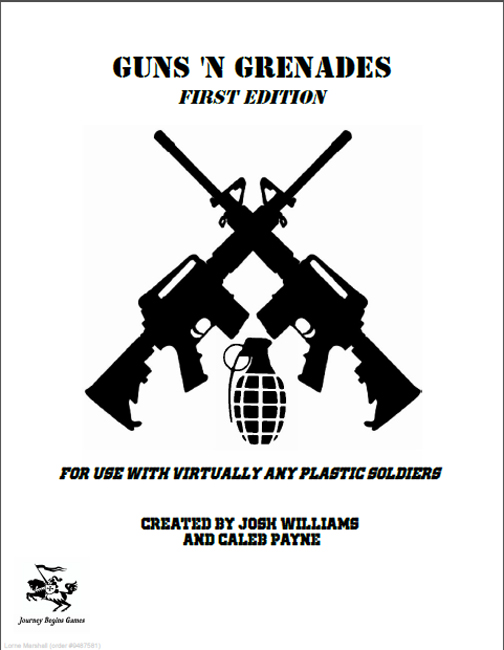
Combat Storm is a rule set produced by Strategy Wave Studios. It is designed for two to four players, ages 12 and older. Combat Storm is a turn-based tactical wargame, intended for use with plastic Army Men as miniatures. The implied scale is 1:35 or 54mm, i.e., one inch of tabletop represents three feet in the game.
The rules are available at combatstorm.com. The rulebook retails for $22.99 U.S., but for an additional $7 U.S. you can purchase a boxed set including the rulebook, about 60 Army Men of various poses and colors, and four vehicles: a main battle tank, a light tank, a self-propelled artillery vehicle, and an air defense/ground support vehicle. Purchase of the rulebook, whether in the boxed set or by itself, grants access to the online Combat Storm Player Portal, through which you can subscribe to newsletters, download exclusive content like print and play tokens for identifying squads and troop states or papercraft terrain, and access utilities such as an army builder tool. You can also purchase additional Army Men, armored vehicles, dice, and additional paid papercraft downloads on the Combat Storm site.
This review describes the boxed set, including a review of the rules. Continue reading “Review: Combat Storm 2nd Edition Boxed Set”


 Editor’s note: the designers of this game have released a v. 1.5 of these rules, which we recommend. You can read the latest review
Editor’s note: the designers of this game have released a v. 1.5 of these rules, which we recommend. You can read the latest review  Here it is, folks – the book that arguably started it all, by Science fiction Author H.G. Wells, best known for authoring the War of the Worlds, The Invisible Man, and The Time Machine. It is less well-known that Wells was a pioneer in miniature wargaming and terrain, and you can get an electronic transcript of his rule set from more than 100 years ago by clicking
Here it is, folks – the book that arguably started it all, by Science fiction Author H.G. Wells, best known for authoring the War of the Worlds, The Invisible Man, and The Time Machine. It is less well-known that Wells was a pioneer in miniature wargaming and terrain, and you can get an electronic transcript of his rule set from more than 100 years ago by clicking 